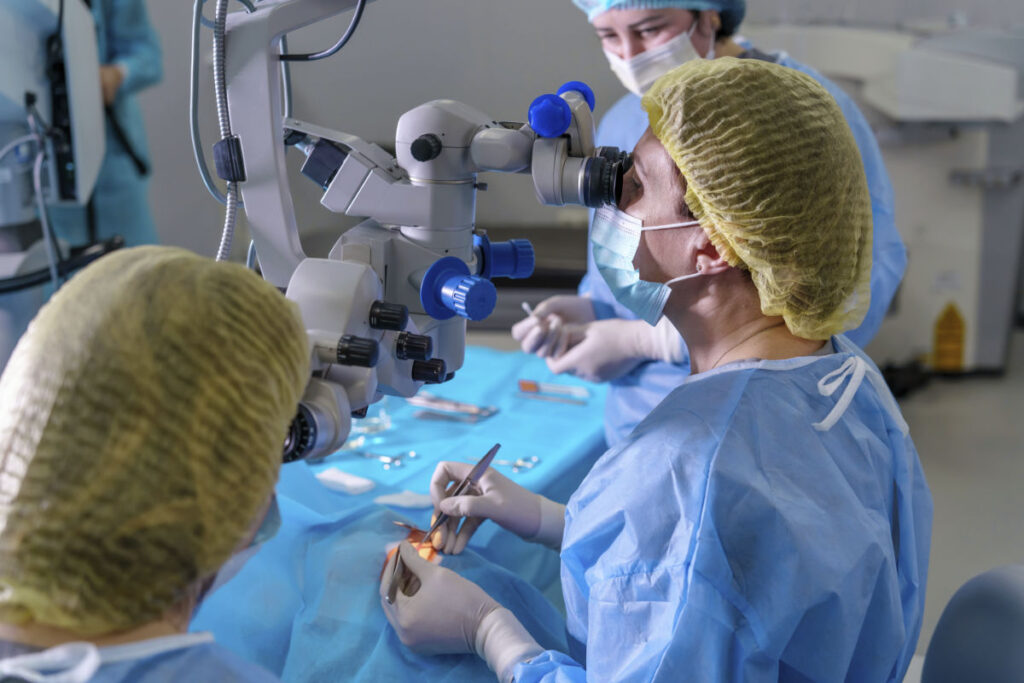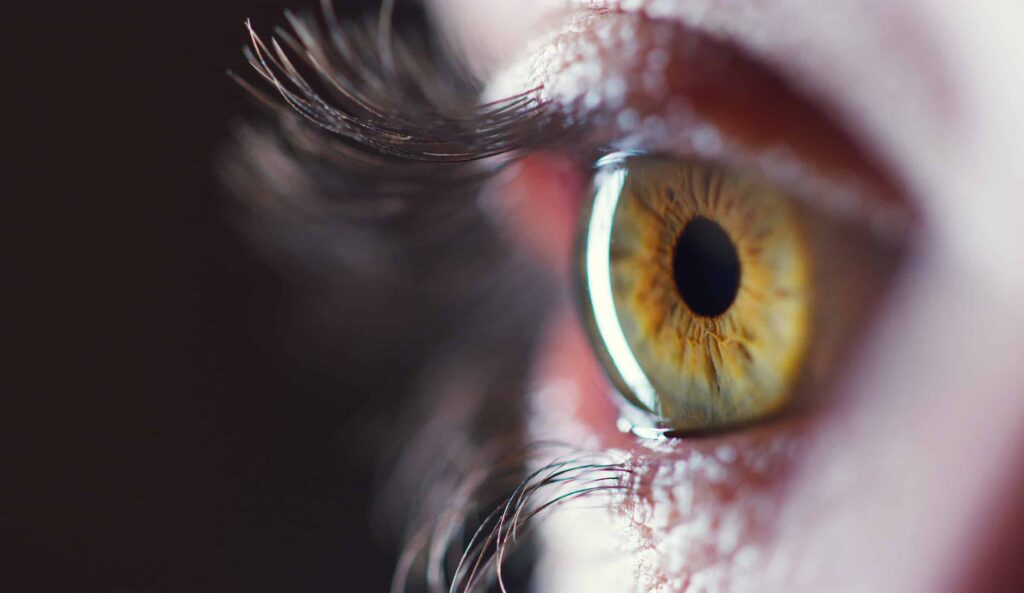Retinal detachment is a serious condition that can lead to permanent vision loss if not treated promptly. Understanding this condition, its causes, and symptoms is crucial for early detection and effective treatment. In this article, we will explore the importance of early detection, the various treatments available for retinal detachment, post-treatment care, and ways to prevent this condition.
Understanding Retinal Detachment
The retina is a thin layer of tissue located at the back of the eye. Its role is to convert light into visual signals that are sent to the brain. Retinal detachment occurs when the retina separates from its underlying layers, disrupting the normal functioning of the eye. This can result in blurry vision, floaters, flashes of light, or even a curtain-like shadow across the visual field.
By understanding the causes, symptoms, treatments, and prevention methods for retinal detachment treatments, you can take proactive steps to preserve your vision. Remember, early detection and appropriate treatment are key to restoring your vision and reducing the risk of permanent vision loss. Prioritize your ocular health and seek professional care if you suspect any changes in your vision. Your eyesight is precious, and by engaging in preventive measures, you can help ensure a bright and clear future.
What is Retinal Detachment?
Retinal detachment is a medical emergency that requires immediate attention. The condition can occur spontaneously or as a result of trauma, inflammatory disorders, or underlying eye conditions such as myopia. The detachment can be classified as rhegmatogenous, tractional, or exudative, depending on the underlying cause.

Causes and Symptoms of Retinal Detachment
Rhegmatogenous detachment typically occurs when a tear or hole develops in the retina, allowing fluid to seep underneath and separate the layers. Tractional detachment occurs when scar tissue on the retina pulls it away from the underlying layers. Exudative detachment is usually caused by fluid accumulation beneath the retina without any tears or holes.
The symptoms of retinal detachment may vary, but common signs include sudden flashes of light, a sudden increase in floaters, a dark curtain or shadow obscuring part of the visual field, or a sudden decrease in vision. These symptoms should never be ignored and warrant immediate medical attention.
It is important to note that retinal detachment can affect individuals of all ages, although it is more common in older adults. Certain risk factors, such as a family history of retinal detachment, previous eye surgeries, or severe nearsightedness, may increase the likelihood of developing this condition. Additionally, individuals who have experienced trauma to the eye or have certain systemic conditions, such as diabetes, are also at a higher risk.
When it comes to diagnosing retinal detachment, ophthalmologists rely on a comprehensive eye examination. This may include visual acuity tests, dilated eye exams, and imaging tests, such as ultrasound or optical coherence tomography (OCT). These tests help determine the extent of the detachment and guide the appropriate treatment plan.
Treatment for retinal detachment typically involves surgery to reattach the retina and prevent further vision loss. The specific surgical approach depends on the type and severity of the detachment. Common procedures include pneumatic retinopexy, scleral buckle surgery, and vitrectomy. Following surgery, patients may need to undergo a period of recovery and follow-up appointments to monitor the healing process.
In conclusion, retinal detachment is a serious eye condition that requires immediate medical attention. Understanding the causes, symptoms, and treatment options can help individuals recognize the signs and seek prompt care. If you experience any sudden changes in vision or other symptoms associated with retinal detachment, it is crucial to consult with an eye care professional without delay.
The Importance of Early Detection
Early detection plays a crucial role in successful treatment and preservation of vision. Regular eye exams are essential in detecting any subtle changes in the retina that may indicate a potential detachment. By identifying risk factors and warning signs, eye care professionals can intervene before the detachment progresses further.
Moreover, early detection not only aids in preserving vision but also in preventing potential complications that may arise if retinal detachment is left untreated. Timely intervention can help avoid permanent vision loss and the need for more invasive procedures.
Role of Regular Eye Exams
Regular eye exams are necessary even if you have no noticeable vision changes. These exams allow eye care professionals to assess your overall ocular health and identify any underlying conditions or abnormalities that may lead to retinal detachment. Early detection can lead to prompt treatment and a higher chance of preserving vision.
Furthermore, regular eye exams are not only crucial for detecting retinal detachment but also for monitoring other eye conditions such as glaucoma, cataracts, and macular degeneration. Detecting these conditions early can help in managing them effectively and preserving your overall eye health.
Recognizing the Warning Signs
Being aware of the warning signs of retinal detachment can help prevent irreversible damage to your vision. If you experience sudden flashes of light, increased floaters, or a sudden decrease in vision, it is imperative to seek immediate medical attention. Prompt evaluation and treatment can significantly improve the chances of restoring your vision.
In addition to recognizing the warning signs of retinal detachment, it is essential to understand the importance of regular self-checks and maintaining a healthy lifestyle to promote good eye health. Simple practices such as wearing sunglasses outdoors, eating a balanced diet rich in eye-healthy nutrients, and avoiding smoking can contribute to maintaining optimal vision and reducing the risk of various eye conditions. Learn more about smoking on https://research.med.psu.edu/smoking/
Overview of Retinal Detachment Treatments
Retinal detachment is a serious condition that demands prompt intervention to reattach the retina and restore normal vision. The complexity of treatment options arises from the diverse nature of detachments and the unique characteristics of each patient. The goal of treatment is to address the detachment effectively while considering individual factors that may impact the outcome.
When faced with retinal detachment, healthcare providers evaluate the type and severity of the detachment to determine the most appropriate course of action. Factors such as the location of the detachment on the retina and the extent of detachment play a crucial role in deciding the treatment strategy. Additionally, underlying health conditions and the overall health of the eye are taken into account to tailor a treatment plan that offers the best chance of success.
Surgical Procedures for Retinal Detachment
Surgical intervention stands as a cornerstone in the management of retinal detachments, providing a direct approach to repositioning and securing the detached retina. Various surgical techniques are employed based on the specific characteristics of the detachment. Pneumatic retinopexy, scleral buckle surgery, and vitrectomy are among the common procedures used to address retinal detachments. These surgeries involve intricate maneuvers to restore the retina to its original position, facilitating proper healing and functional vision recovery.
Pneumatic retinopexy, for instance, utilizes a gas bubble injected into the eye to push the detached retina against the eye’s wall, allowing it to reattach. On the other hand, scleral buckle surgery involves placing a silicone band around the eye to counteract the forces pulling the retina away. Vitrectomy, a more complex procedure, involves removing the vitreous gel to access and treat the detached retina directly.
Non-Surgical Treatments for Retinal Detachment
Non-surgical approaches are considered in specific cases of retinal detachment, particularly for minor detachments or those located in the peripheral retina. Laser therapy and cryotherapy are non-invasive techniques used to create scar tissue that adheres the retina to its proper position. While these treatments offer a less invasive option, they may not be suitable for all detachments, and surgical intervention remains the gold standard for achieving optimal outcomes.
Understanding the nuances of retinal detachment treatments underscores the importance of a tailored approach that addresses the unique characteristics of each case. By combining surgical expertise with non-surgical interventions when appropriate, healthcare providers strive to offer comprehensive care aimed at restoring vision and preserving ocular health.
Post-Treatment Care and Recovery
After retinal detachment treatment, proper care and follow-up are essential for a successful recovery. It is important to understand what to expect during the healing process and to adhere to any post-operative instructions provided by your ophthalmologist.
Retinal detachment surgery is a delicate procedure that requires meticulous post-treatment care to ensure the best possible outcome. In addition to physical rest, it is crucial to maintain a positive mindset and follow a healthy lifestyle to support the healing process. Adequate nutrition, sufficient hydration, and avoiding smoking can all contribute to a smoother recovery.
What to Expect After Treatment
Following surgical intervention, it is common to experience some discomfort, redness, and swelling. It is important to avoid rubbing or applying pressure to the eye and to take any prescribed medications as instructed. Your ophthalmologist will monitor your progress and advise on specific activities or restrictions during the recovery period.
It is normal to have fluctuations in vision and experience sensitivity to light in the days following retinal detachment treatment. These symptoms typically improve as the eye heals, but it is essential to communicate any persistent issues to your healthcare provider for timely intervention.
Tips for a Successful Recovery
During the recovery period, it is important to take good care of your eyes to optimize healing and minimize complications. This includes avoiding strenuous activities, ensuring proper eye hygiene, protecting the eyes from bright lights or trauma, and attending all scheduled follow-up appointments. Any concerns or changes in vision should be promptly reported to your eye care professional.
Engaging in relaxation techniques such as deep breathing exercises or meditation can also aid in reducing stress levels, which can positively impact your recovery. Additionally, maintaining a well-balanced diet rich in vitamins and minerals that support eye health, such as leafy greens, fish, and citrus fruits, can further enhance the healing process.

Preventing Retinal Detachment
While not all cases of retinal detachment can be prevented, there are steps you can take to minimize your risk and protect your eye health.
Lifestyle Changes for Eye Health
Maintaining a healthy lifestyle can improve overall eye health and reduce the risk of retinal detachment. This includes eating a balanced diet rich in fruits and vegetables, protecting your eyes from harmful UV radiation with sunglasses, avoiding smoking, and exercising regularly. Regular exercise promotes optimal blood flow to the eyes and supports retinal health. To read more about harmful UV radiation click here.
In addition to these lifestyle changes, it is important to understand the impact of other factors on retinal detachment risk. For example, individuals with a family history of retinal detachment may be at a higher risk and should take extra precautions. Furthermore, certain medical conditions such as diabetes and high blood pressure can also increase the risk of retinal detachment. Therefore, managing these conditions through proper medical care and lifestyle modifications is crucial in preventing retinal detachment.
Regular Follow-ups and Eye Care
Regular eye exams are not only crucial for early detection but also for ongoing monitoring of your retinal health. By staying committed to regular follow-up visits with your eye care professional, any changes or potential risks can be identified and addressed in a timely manner. It is recommended to discuss your specific risk factors and follow the advice provided by your eye care provider.
In addition to regular eye exams, it is important to be aware of the warning signs of retinal detachment. These may include sudden flashes of light, a sudden increase in the number of floaters in your vision, or the appearance of a curtain-like shadow over your visual field. If you experience any of these symptoms, it is crucial to seek immediate medical attention to prevent further damage to your retina.
Other resources: Top Signs of Retinal Eye Issues and When to See a Specialist

